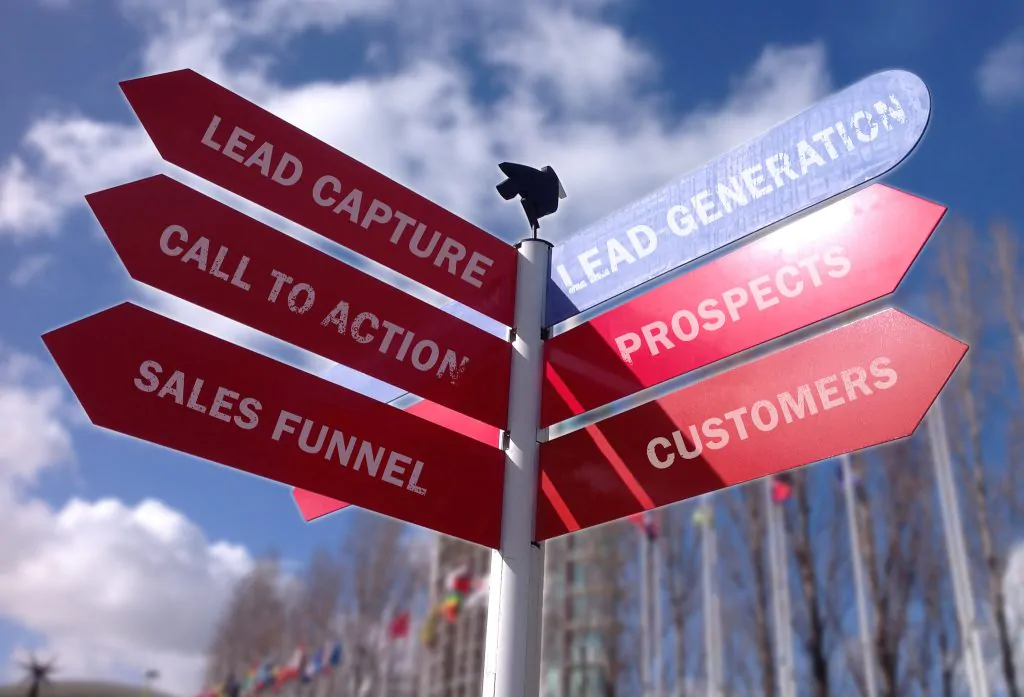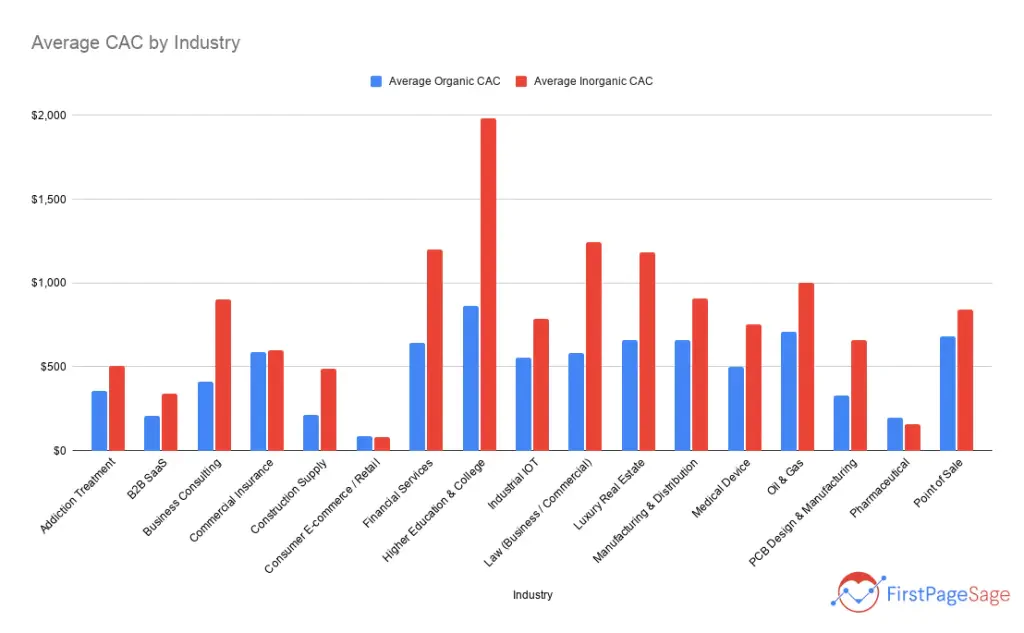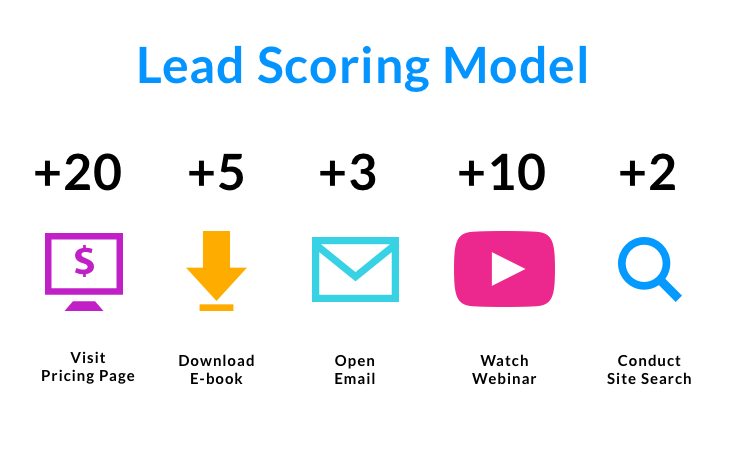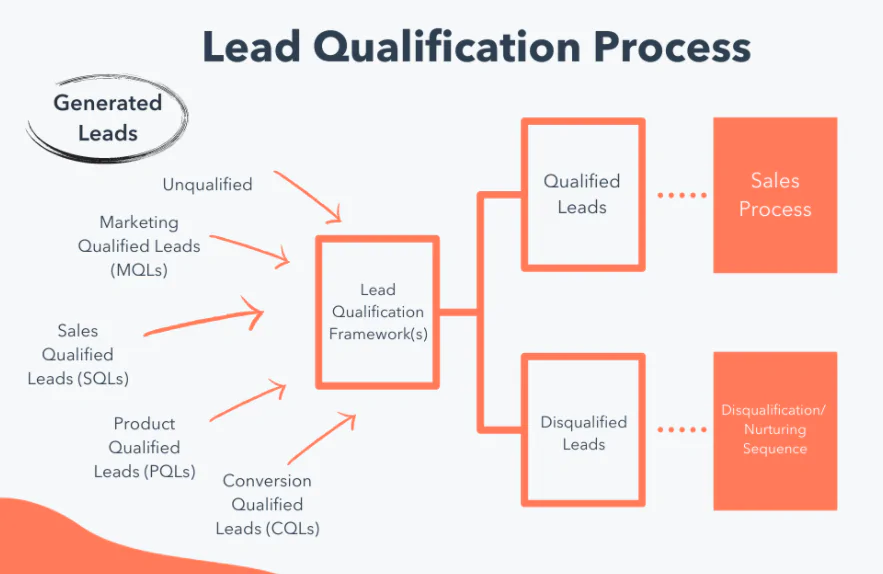A key element of business success is marketing performance.
But how do you determine whether a campaign is successful? More often than not, it is about customer acquisition – new customers mean more sources and opportunities for revenue.
Marketing campaigns are supposed to make you money, so if you’re focusing on getting more customers, you need to keep the cost of acquisition down. In B2B, that’s a big ask, considering the Customer Acquisition Cost (CAC) averages over $500 for most industries.
Source: FirstPageSage
But before we talk about customers and the time and money we invest in bringing them on board, we must take a long, hard look at leads. In B2B, most, if not all, customers start out as leads. Leads are the larvae that eventually turn into the butterflies that customers are. Leads make for a significant metric in terms of conversion and sales. Thus, you need to measure their worth before you spend time or effort nurturing them.
So how do you decide if a lead is worth following up on? How do you decide if your lead generation spend is flowing back in the form of profits or not?
Start by looking at the “value” of every lead.
Key takeaways:
- Lead value helps you justify marketing spend to acquire new leads.
- Lead value is a key metric in lead scoring, lead qualification, lead routing, and lead nurturing processes.
- Automation, a good lead management process, and Sales-Marketing alignment are keys to maximizing lead value.
What is Lead Value?
B2B businesses need an elaborate sales and marketing machine to acquire more customers. Naturally, the more leads you have, the more conversions you’ll get and the more revenue you’ll generate.
A lead’s value is the estimated worth of your leads over their lifetime – regardless of whether they turn into a customer or not. Knowing lead value helps in making informed decisions concerning how you acquire more leads. Forecasting sales and justifying marketing expenditures become easier since the value of customers extends beyond the first purchase.
The way you figure out lead value depends on the way your business operates or whether you’re calculating value on the basis of profits or revenue. You can do this in a few different ways. The simplest way is:
Total Lead Value = Total Revenue / Total Number of Leads
A slightly complex way to do the same would be:
Lead Value = Average Sale Value X Conversion Rate
But the most accurate way to determine how much each lead makes for you would be this:
Average Lead Value = (Total Revenue / Number of Leads) X Percent Profit
Which is to say, if you make $500,000 per month from 500 leads at 4% profit, the value of each lead is $400 on average.
Why Should You Calculate Lead Value?
Leads are an excellent metric for measuring the effectiveness of your marketing. Tracking lead value tells you whether your marketing and sales efforts are generating enough profits.
At a basic level, you know how many leads you need to sustain your business each month by estimating the costs associated with generating those leads.
At a more precise level, you can estimate whether your marketing campaigns are generating qualified leads on a per-channel basis and factor in the value of these qualified leads into ROI calculations for those channels. This will tell you whether your SEO, PPC, email, or other efforts are worth it or if you need to change tack or quit the channel altogether.
The Importance of Lead Value in the Sales Funnel
You may often wonder how to identify the leads that are most likely to be converted into buyers or optimize a campaign to generate more leads. Well, the answer to those questions is Lead scoring.
What’s the next step after lead generation? Identifying which of them are most likely to convert. The first step is lead scoring.
Lead Scoring: Companies use different methods to analyze and nurture leads. Lead scoring measures the level of compatibility a lead has with your product and the likelihood of conversion based on actions they’ve taken in the past. It works in two steps:
- Make sure your buyer profile matches your ideal buyer.
- Track how leads are engaging.
By using a scoring model, you can assign a point value to each action a prospect takes, such as visiting a specific web page or attending an event.
Source: LeadFuze
Once a score is assigned, you can compare it against the lead value to determine the time/effort your sales team can spend on that lead, depending on the level of nurturing required.
Lead qualification: Based on the lead score, you can work out if the lead is “qualified” to be nudged to the next step in your funnel or not. This happens at different levels – the lead is qualified by Marketing or Sales, depending on their assessment of whether it would convert or not.
Source: HubSpot
Again, here if the lead value meets a certain threshold, you can categorize the lead as a Marketing Qualified Lead (MQL – Marketing will pass these on to Sales) or Sales Accepted Lead (SAL – Sales will work on this).
Lead routing: Lead routing involves assigning leads to representatives based on demographic data of the lead or the salesperson’s skills. Lead routing, aka lead assignment, can be taken care of by automation software, based on preset criteria that you’ve specified.
Based on your lead values, you can induce your software or tweak your process to route leads faster and to the right sales rep.
Lead nurturing: Lead nurturing aims to engage the target audience and support them throughout their journey by providing them with relevant and contextual information at the right times, ultimately enabling them to make a purchase decision in favor of your company or product.
Again, depending on your lead values and the profit you stand to make on each transaction or sale, you can decide how much time, effort, or budget to spend on nurturing a lead.
Other Metrics Influenced by Lead Value
A lot of factors impact the lead value, especially at different stages of the sales cycle. Consequently, it can also impact other key factors. Here are some insights you can gain by looking at the lead value.
Gain insights on other metrics: If your average lead value is declining, it might mean you’re generating fewer leads. Or, it might mean that your cost per lead has gone up. In another example, if your revenue for the month didn’t increase significantly despite a rise in the number of leads, it means your Average Order Value (AOL) must be down, i.e. leads must be spending less per transaction.
Ensure marketing efforts are ROI-driven: You can determine if the money you invested in PPC, SEO, social, or email campaigns is yielding ROI or not by looking at your lead value. For example, if your Cost Per Click (CPC) in PPC campaigns goes up, you’ll see a decline in lead value, while everything else remains the same.
Use your ad budget better: If you’re generating additional revenue with the same ad budgets, you can be sure you’re getting more or better-qualified leads from the campaign. Optimizing your ad budgets for maximizing conversion rate as well as lead value will give you credibility for future campaigns.
How Lead Value Impacts Multi-Location Businesses, Franchises, and Dealerships
Large, multi-location businesses have a variety of lead generation strategies across different digital and traditional channels. The leads that the central marketing team passes on to dealerships, distributors, or franchisees are sometimes never followed up with. HQ seldom has visibility or insights into what happened to these leads or whether they converted. The local business rep might not have the time, technology, or expertise to focus on nurturing the leads they’ve passed.
By keeping track of average lead value across all outlets or on a per-location basis, the brand knows exactly how the leads that they pass on to that outlet are dealt with and the rate they’re converting at. This allows them to provide every dealer or distributor in their network with the necessary tools, resources, and messaging to convert every qualified lead and explore promotion and lead nurturing possibilities across channels.
MXTR’s marketing automation services are designed exactly for such multi-location operations. We help you equip your local representatives with everything they need to assess, qualify, manage and nurture leads.
Get in touch for a customized demo where we show you how to score, route, and manage leads more efficiently, no matter how many locations you have!
Featured image: Flickr








